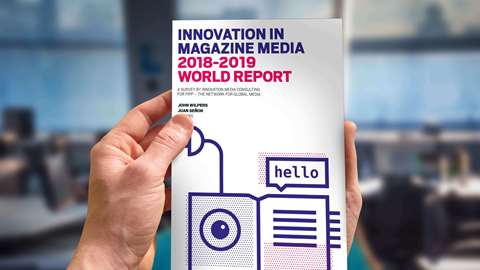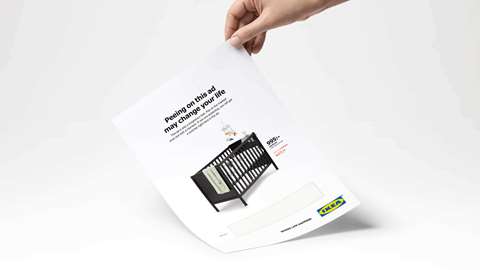The power of print at a glance
- Print highlights your brand’s commitment and authenticity.
- If you inspire your customers in print first, you can sell at a time that is right for them.
- Print that is considered and intelligently written is currently on trend.
If you fancy a pair of Hiut Denim jeans, you’d better be prepared to wait.
The brand’s top line retails at £230 – and even at that luxe price point, it’ll probably take you three long months to get your order filled.
To say this cult global brand is in demand is an understatement. Prince Harry’s fiancée Meghan Markle is a fan – remarkable for a boutique Welsh firm that employs fewer than 20 staff.
Hiut’s co-founder, entrepreneur David Hieatt, is no stranger to success. He sold his first venture – sustainable clothing company Howies – to outdoor giant Timberland back in 2006.
And he started The Do Lectures – a platform for sharing business expertise that was voted one of the top 10 ideas festivals in the world by The Guardian.
Hieatt believes passionately in print’s ability to deliver engaged audiences for brands – even when it appears to make little financial sense.
It’s why Hiut produces an annual 144-page perfect-bound Yearbook that customers have to pay £10 for.
Each issue attracts contributions from some of the world’s best thinkers, designers and photographers – and for the past three years has sold out.
But this year’s edition is late – months late, in fact.
When Hieatt took to Instagram to apologise, a flood of encouragement came his way, rather than complaints: “Remember, great negates late,” said @jamessmi. “Have prepped the doormat in anticipation,” said @thisisalbertrd.
To date, none of the 500 customers who preordered the Yearbook have cancelled their subscription.
So, how exactly does Hiut cultivate this sort of commitment – and how big a part does print play in its clever community building? We caught up with Hieatt to find out.
Your first brand, Howies, had a catalogue – but customers had to request it. Why?
Discovery is important. We like finding a new restaurant, a new hotel, a new band. Having a booklet fall out of your magazine isn’t discovery. It’s litter.
Making something hard also gives it meaning. The fact that our customers had to put in a bit of effort to get a catalogue meant that if they asked for one, they actually wanted it.
This wasn’t just opt-in… this was: ‘I want to be part of something’. Our customers felt special receiving it – and what we were selling – because we didn’t make it easy to get.
Instead of a catalogue, you publish a Yearbook for Hiut Denim. What’s its purpose?
The things that we possess tell stories about us. I’m really fascinated by that.
That’s why our jeans have a history tag on them. Each pair has a unique number which allows you to see six photographs of your jeans being made. It also allows you to upload photos of your journey along the way.
In five years’ time, if our jeans end up in a second-hand shop and their next owner is able to see the history of the jeans, it might be of interest.
In the same way, our Yearbook seeks to bookmark the passing of time.
We bring the same people onboard each year to show all their stories as time passes. We take you on that journey with each one of them. Maybe you will collect all the Yearbooks and look back to see how everyone has changed. I like the idea that we capture that.
Why do you print it?
This is very much the age of digital. But I think digital needs analogue.
We will always want to feel something. To touch something. To pick it up and smell the ink. To see photographs how they were meant to be seen.
There is an authority to print. There is a beauty to it. It has something that separates you. You can read it, put it down, pick it back up months later, and reconnect.
For every brand that cancels its paper catalogue, there is an opportunity for another smart brand. If you pour your heart into print, your customer can feel it.





